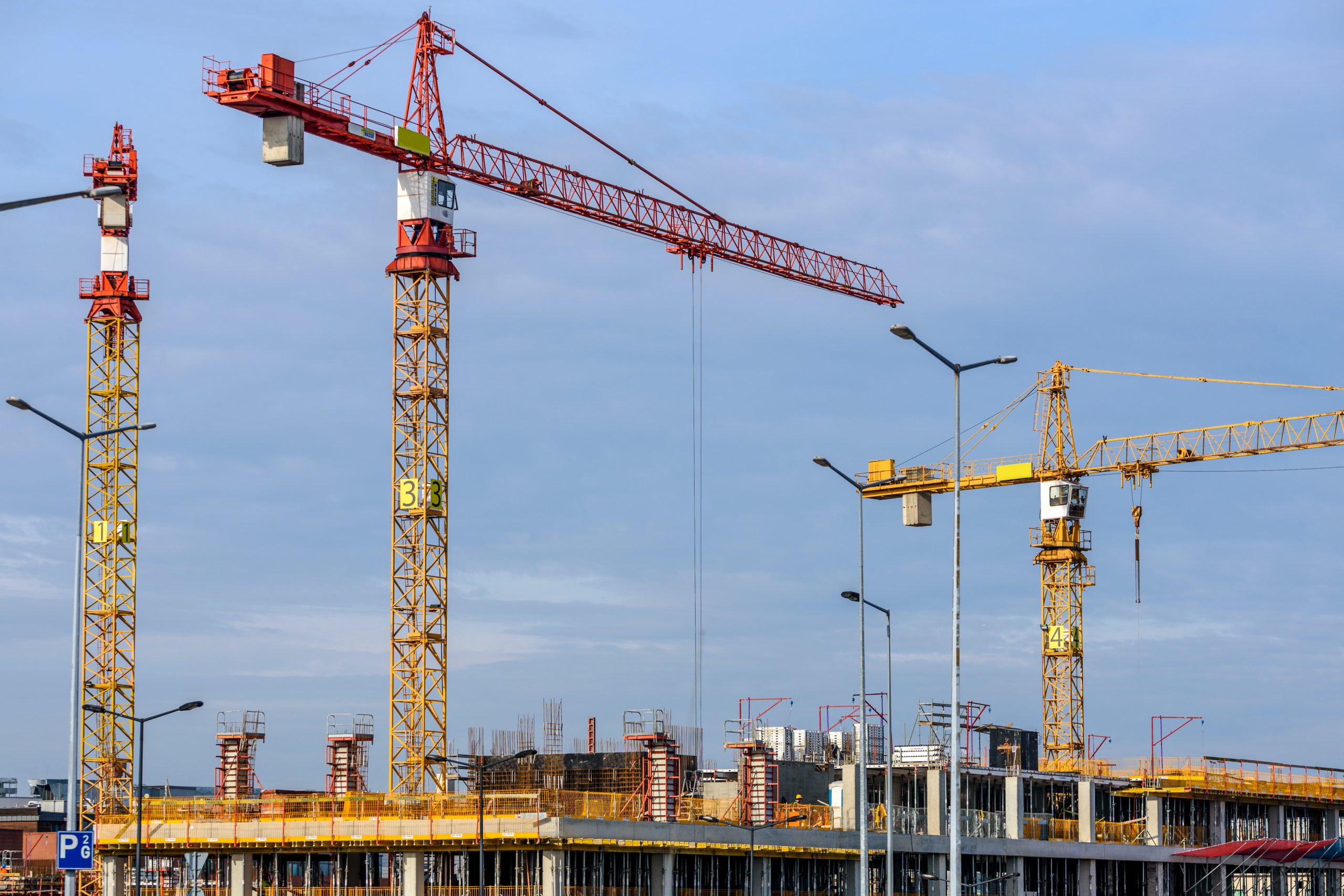
23 May Construction Industry Trends to Watch in 2021🔥
As the industry becomes more competitive and the market shifts, harnessing these five construction trends will prove valuable for any rental or construction firm.
Looking forward, many industry trends will be affected by the fallout from the pandemic. New technology continues to change the construction site and increase profit margins. As the industry becomes more competitive, harnessing these construction trends will prove valuable for any construction or rental firm.
Here are five must-watch construction industry trends for 2021:
1. Protective Equipment
The COVID-19 pandemic drastically impacted the construction industry, affecting jobsite and business guidelines by way of state regulations emphasizing cleanliness and strict safety protocols.
The industry is also witnessing a rise of machines capable of identifying common safety issues and eliminating those threats one at a time. Wearable innovations are making their way to the jobsite with work boots that connect to Wi-Fi and alert others if a person has fallen, material moving “mules” transporting heavy materials, and robots construct scaffolding autonomously. These robots are changing the jobs humans do — in most cases, they’re augmenting human decision-making (like deciphering and translating data findings into actionable insights) and making room for different, higher-level jobs.
2. Efficient Technology
The biggest differentiator for business owners and fleet managers this year is likely to be technology in construction — specifically, the innovations that can enhance efficiency. The COVID-19 pandemic is causing increased reliance on construction technology, which will only increase in popularity through 2021 and beyond.
For example, smart contracts offer all organizations in a project a shared system to do business, allowing them to track and pay for services. Rather than getting contracts and tracking deliverables from separate parties, business owners can use smart contacts as an all-in-one tracking system where rules and deadlines are set and the blockchain enforces them. This system will make for faster closeouts, increased security, better project tracking, and an automated supply chain.
3. Growing Need for Workers
One of the most noticeable construction trends of the past few years is a vast increase in the demand for labor. However, quality labor is expensive and competitive. Moving forward, we will need more educated workers to manage and interpret the data produced by new technology. Fortunately, women are stepping in to fill more competitive roles. According to the Bureau of Labor Statistics, women occupy only 10.9 percent of construction industry jobs, and industry hiring trends show a 94 percent growth in female-owned construction firms from 2007 to 2018. Additionally, 30 percent of construction companies promoted a woman to a senior position in 2018.
The industry is also targeting Generation Z, born between 1995 and 2010, in recruiting efforts. In the past, negative perceptions of trade schools were detrimental to efforts to hire new talent in construction. The COVID-19 pandemic caused a shift in attitudes toward alternative education options and resulted in increased positive attitudes toward trade school, positioning rental and construction businesses to show off the career growth potential in their industries and the abundant opportunities to experiment with new technologies.
4. Remote Worksites and Mobile Access
Mobile applications in the construction industry allow worksite access like never before, including real-time inspections, on-site accountability, and accurate measurements taken from a mobile phone camera.
COVID-19 mandated that teams continue to collaborate without physical access to equipment, customers, materials, spaces, or even other teammates. Those without complete mobile connectivity will be at a productivity and sales disadvantage going forward.
5. Construction Management Software
Comprehensive construction management software is a vital tool for remaining competitive, building a valuable business, and mastering operational efficiency. While each software service differs slightly in features and offerings, the best tackle end-to-end needs from RFIs to compiling data, sharing files with mobile teams, budgeting, document storage, payroll and HR, and inventory monitoring.
Choosing the right construction management software is important for your business. Begin with looking at ease of use and integration with other existing software. Look for scalable software that fits right now, yet will help manage your needs as those needs multiply. Evaluate customization options, upgrades, and additional features, and check for availability of support and training to get up-and-running.
By adopting new practices, leveraging new technologies, and investing in new projects, business owners can reduce risk, win more customers, and enjoy profitability. As we know, 2020 was an anomaly for statistics in the construction industry, but looking forward, the outlook is largely positive. After a tepid year, an upswing in construction is expected throughout 2021 as the U.S. economy recovers from the pandemic and new economic centers continue to develop and grow.
Contact Information:



